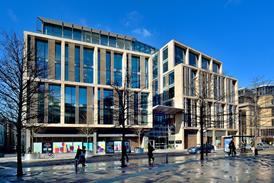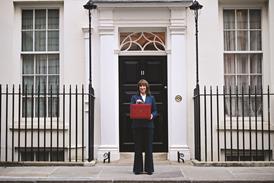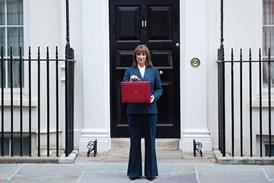Solicitors are slowly being eased off the bench, new figures indicate, with a greater proportion leaving the judiciary than entering it.
Statistics published today by the Ministry of Justice show that over the past 10 years, representation of non-barristers among court and tribunal judges fell from 48% to 40%. In court posts only, the proportion of solicitors and legal executives has dropped from 36% to 31%.
During 2024/25, non-barristers accounted for 11% of new entrants and 36% of those leaving the judiciary. Representation is lowest in senior posts (High Court and above) where just 5% (eight out of 151) have a non-barrister background. In the recent recruitment of six judges to the Court of Appeal, all were barristers and silks.
For all legal recruitment exercises in 2024-25, solicitors (45%) made up more applicants than barristers (37%), but constituted a smaller percentage of the recommendations (24% compared with 48%).
Richard Atkinson, Law Society president, said solicitors will continue to think judicial posts are not open to them while figures continue to show how the odds appear to be stacked against them. ‘Solicitors are continuing to achieve appointments as judges at disproportionately low rates compared with barristers and the numbers are falling,’ said Atkinson. ‘Our concerns remain that until this percentage significantly increases, we will struggle to persuade our members that entry to the judiciary is a level playing field.’
Read more
Women's representation in the judiciary has improved - but the figures show a mixed picture for different ethnic minority groups.
In recruitment and promotion, female candidates accounted for 49% of applications (2,259), 47% of those shortlisted (470) and 52% of recommendations for appointment (218). Of the new entrants to the judiciary, 60% were female last year. Female representation among all court judges was up from 25% in 2015 to 39% now, and from 44% to 54% in tribunals. As at 1 April 2025, in the courts, female judges held 28% of the more senior posts. The highest level of female representation was among district judges and deputy district judges at 48%.
Asian and black lawyers were disproportionately less likely to be shortlisted or recommended for appointment compared to white applicants. Ethnic minority individuals accounted for 11% of court judges and 14% of tribunal judges, with more than half of the total being based in London.
Atkinson added: ‘Minority ethnic candidates are disproportionately ruled out at every stage of the appointments process. While there have been some positive changes relating to Asian and mixed-ethnicity candidates, no progress at all is being made in relation to black candidates.’
Across all recruitment exercises completed in 2024-25, applicants from a lower socio-economic background had a recommendation rate of 7%, compared with those applicants with a professional or intermediate socio-economic background who had rates of 10% and 11% respectively. Applicants whose parents did not go to university were less likely to get through the process than those whose parents did.
Introducing the statistics, lady chief justice Baroness Carr of Walton-on-the-Hill said: ‘I am determined to improve diversity in the judiciary. It is one of my key priorities. Progress is too slow, and we cannot shy away from that, but we will persist in our efforts to make real change.’
As at 1 April 2025, there were 3,578 court judges and 1,716 tribunal judges, with an additional 3,069 non-legal members of tribunals.
This article is now closed for comment.




























19 Readers' comments